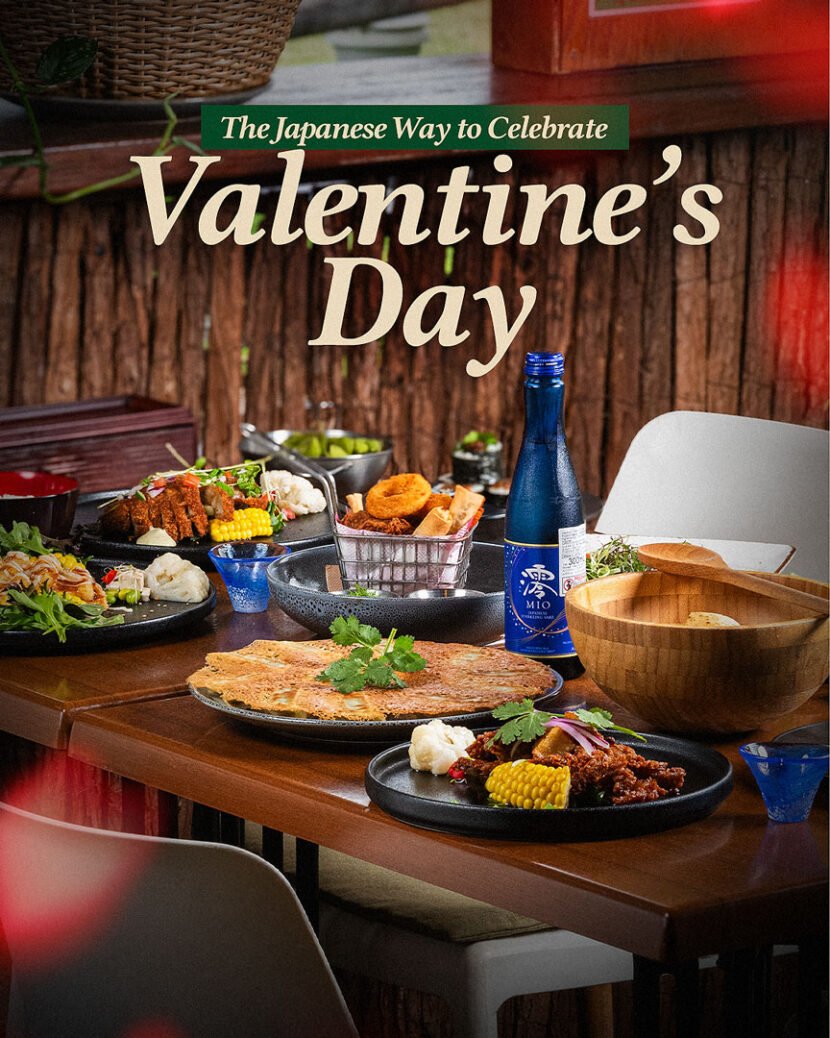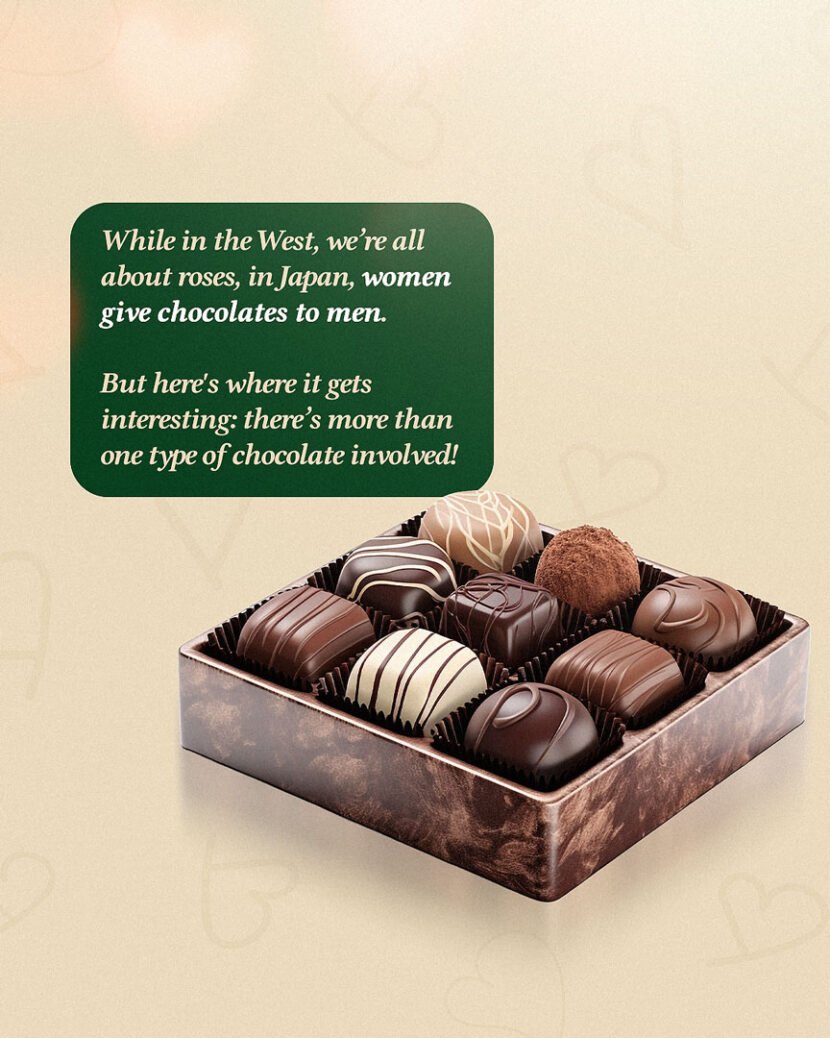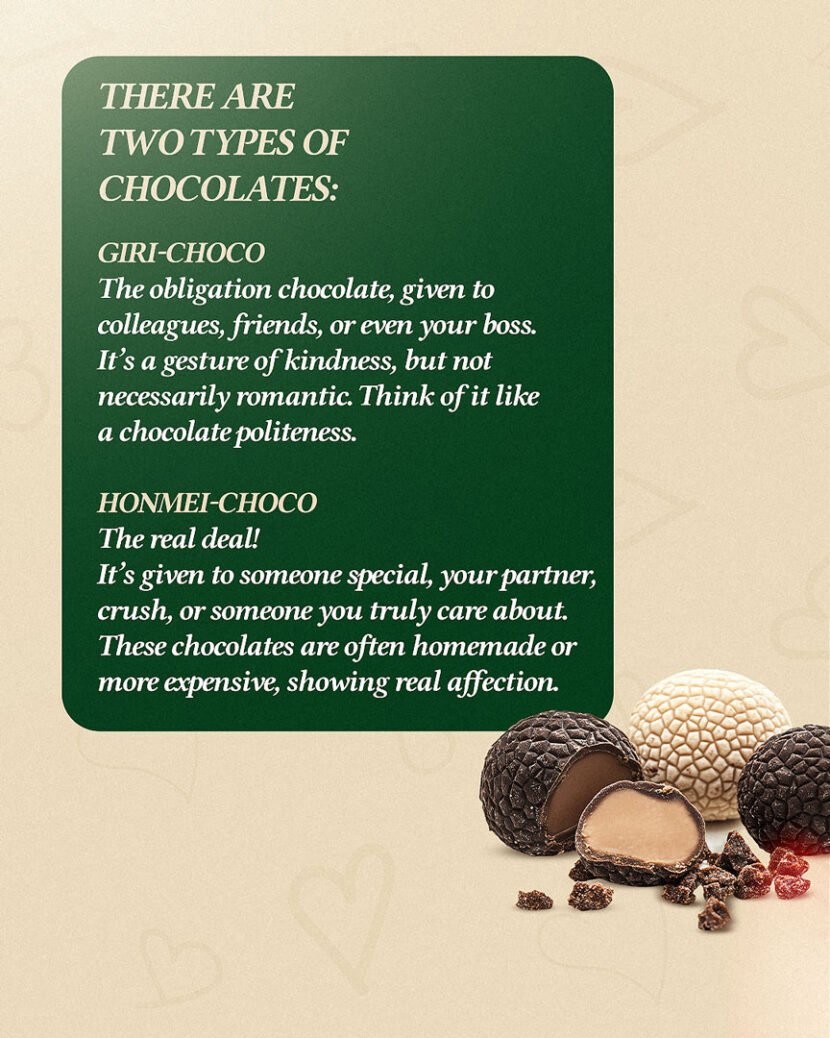Valentine’s Day in Japan – The Sweetest Traditions
While many of us in the West associate Valentine’s Day with roses, romantic dinners, and gifts, Japan has its own unique way of celebrating the day of love.
Far from just exchanging flowers, the Japanese Valentine’s Day tradition revolves heavily around chocolate, with some fascinating customs that add a special twist to the occasion.
Chocolate, Chocolate Everywhere 🍫
In Japan, it’s women who take the lead on Valentine’s Day, but instead of receiving gifts, they give chocolates to men. This might sound unusual, but it’s the start of a rather sweet tradition that’s grown over time.
What makes this tradition even more interesting is that there are two distinct types of chocolates given: Giri-choco and Honmei-choco. Let’s take a closer look at these two varieties.
The Two Types of Chocolates: Giri-choco vs Honmei-choco 🤔
Giri-choco (Obligation Chocolate)
This is the chocolate given out of obligation or politeness. Women give Girichoco to friends, colleagues, classmates, and even their boss. It’s a way of showing appreciation but doesn’t carry any romantic intent. Think of it as a sweet gesture of respect and kindness. These chocolates tend to be simpler and more affordable, and often come in ready-made boxes or bags from shops.


Honmei-choco (True Love Chocolate)
On the other hand, Honmei-choco is given to someone truly special, like a partner, crush, or someone you have deeper feelings for. These chocolates are often more luxurious, homemade, or bespoke – designed to show real affection. Honmeichoco is the ultimate expression of love on Valentine’s Day, and women put much more thought into the selection or creation of these chocolates. They may even spend hours making handmade chocolates to ensure they are perfect!
What Happens Next: White Day 🍬
If you think Valentine’s Day is all about women giving chocolates, you’d be mistaken. A month later, on 14th March, it’s time for White Day, where men return the favour. Men who received chocolates on Valentine’s Day must then give chocolates or gifts in return – typically of higher value, or more personal in nature.
This tradition creates a full circle of love and appreciation, where both partners have the opportunity to express their feelings and show their affection.
White Day has become just as popular as Valentine’s Day in Japan, and the cycle of gift-giving creates an interesting dynamic in relationships. While women give chocolates to men on Valentine’s Day, men are expected to give back on White Day, making both occasions part of an ongoing exchange of sweetness.
A Sweet Twist on Valentine’s Day 🍬💕
In Japan, Valentine’s Day and White Day aren’t just about exchanging chocolates – they represent a thoughtful way of expressing affection, whether it’s platonic, professional, or romantic. These traditions highlight the importance of giving and showing appreciation, making the entire season one of sweetness, connection, and love.
So, while roses and romantic dinners are lovely, there’s something extra special about the chocolate-filled, heartfelt exchanges that define Valentine’s Day in Japan. Whether you’re sharing Giri-choco with a colleague or Honmei-choco with your partner, it’s a day that reminds us all to express our feelings and show love in whatever way feels right for us.
📱 Mobile (Text or Call): +61 480 416 307


